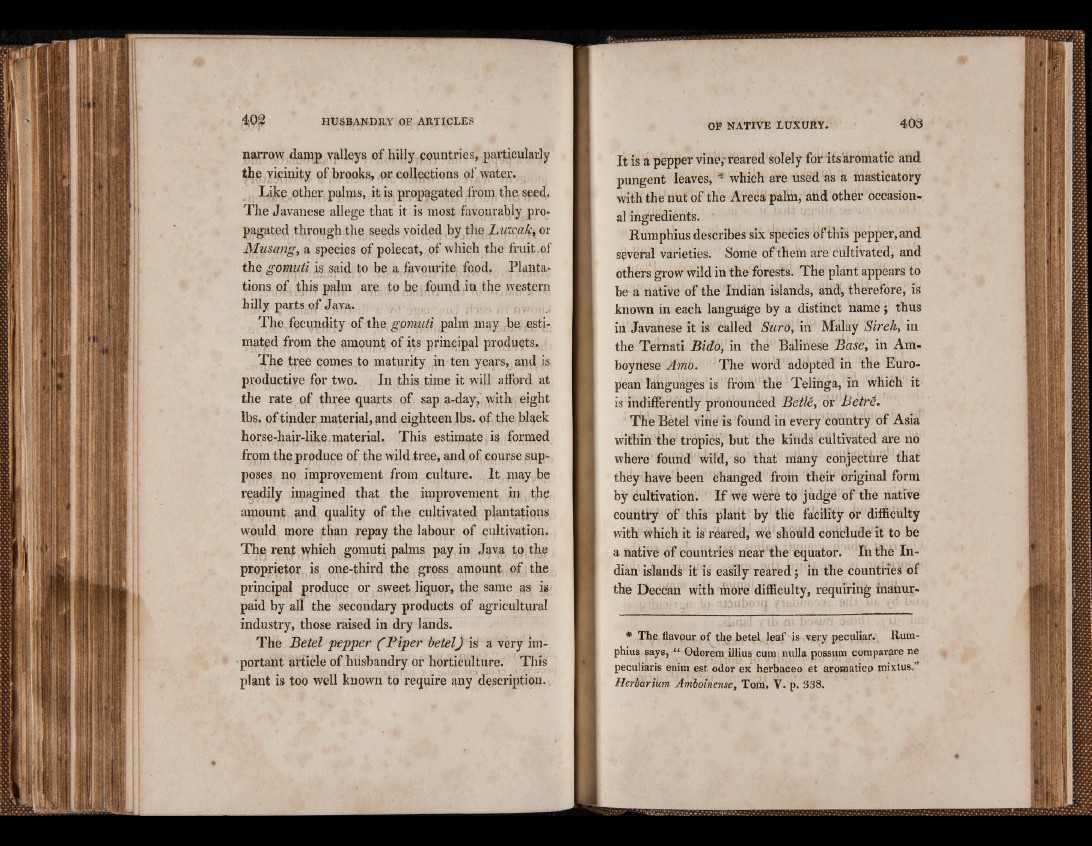
Harrow damp valleys of hilly countries, particularly
the vicinity of brooks, or collections of water.
Like other palms, it is propagated from the seed.
The Javanese allege that it is most favourably propagated
through the seeds voided by the L ivw a k , or
Musang, a species of polecat, of which the fruit .of
the gomuti is said to be a favourite food. Plantations
of this palm are to be found in the western
hilly parts of Java.
The fecundity of the gomuti palm may be estimated
from the amount of its principal products.
The tree comes to maturity in ten years, and is
productive for two. In this time it will afford at
the rate of three quarts of sap a-day, with eight
lbs. of tinder material, and eighteen lbs. of the black
horse-hair-like material. This estimate is formed
from the produce of the wild tree, and of course supposes
no improvement from culture. It may be
readily imagined that the improvement in the
amount and quality of the cultivated plantations
would more than repay the labour of cultivation.
The rent which gomuti palms pay in Java to the
proprietor is one-third the gross , amount of the
principal produce or sweet liquor, the same as is
paid by all the secondary products of agricultural
industry, those raised in dry lands.
The Betel pepper ( Piper betelJ is a very important
article of husbandry or horticulture. This
plant is too well known to require any description.
It is a pepper vine,* reared solely for its aromatic and
pungent leaves, * which are used as a masticatory
with the nut of the Areca palm, arid othér occasional
ingredients.
Rumphius describes six species of this pepper, and
several varieties. Some of them are cultivated, and
others grow wild in the forests. The plant appears to
be a native of the Indian islands, and, therefore, is
known in each language by a distinct name ; thus
in Javanese it is called Suro, in Malay Sir eh, in
the Ternati Bido, in the Balinese Base, in Am-
boynese Amo. The word adopted in the European
languages is from the Teliriga, in which it
is indifferently pronounced Betlé, òr Betré.
The Betel vine is found in every Country of Asia
within the tropics, but the kinds cultivated are nò
where found wild, so that many conjectùrè that
théy have been changed frorii their original form
by cultivation. If we wère to judgé of the native
country of this plant by the facility or difficulty
with which it is reared, we should conclude it to be
a native of countries near the equator. “ Iri the Indian
islands it is easily reared ; in the countries of
the Deccan with riiore difficulty, requiring manur-
* The flavour of the betel, leaf is very peculiar. Rumphius
says, “ Odorem illius cum nulla possum comparare ne
pecuiiaris e.nim est odor ex herbaceo et aromatico mixtus.”
Herbarium Amboinense, Tom, V. p. 338.